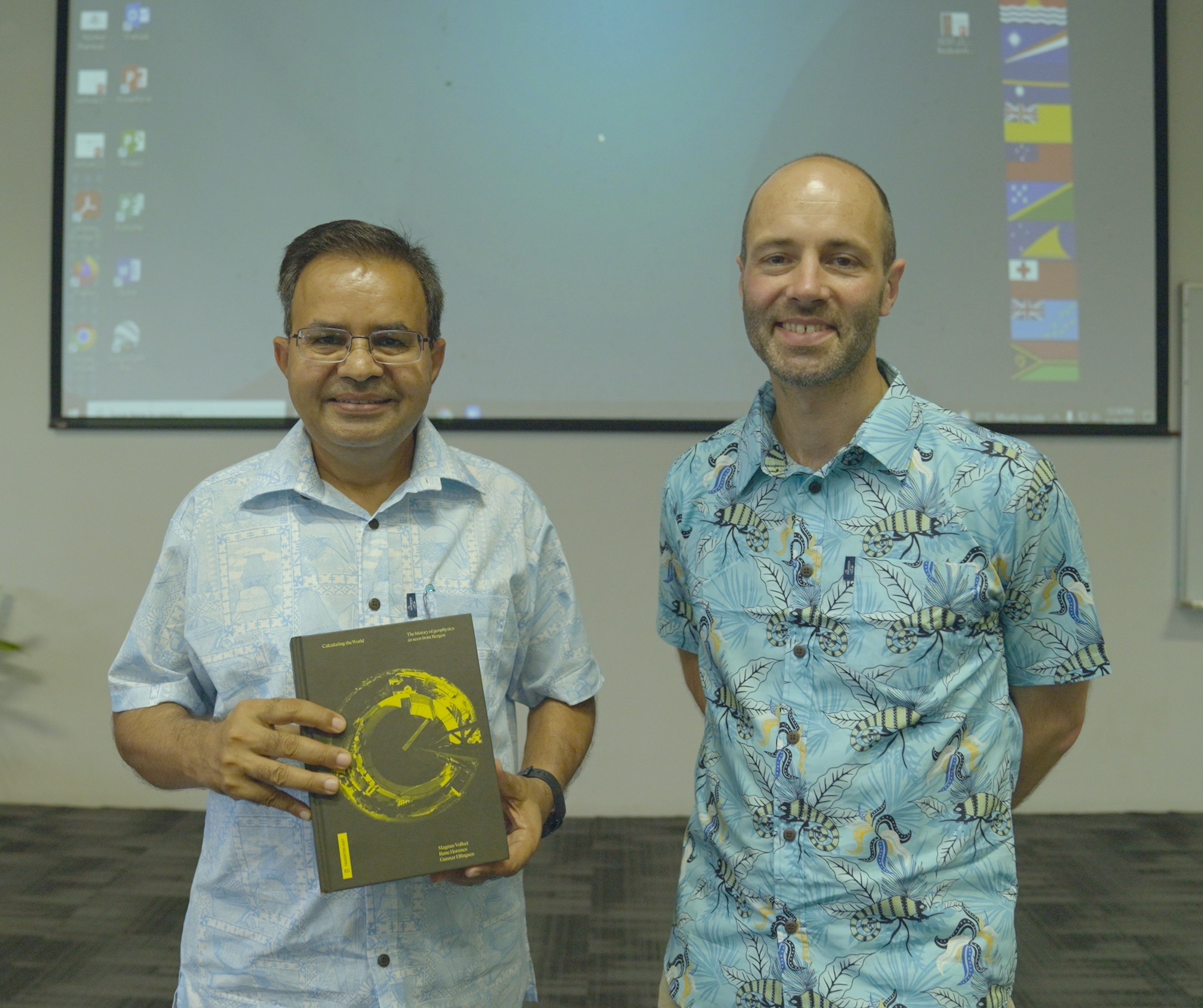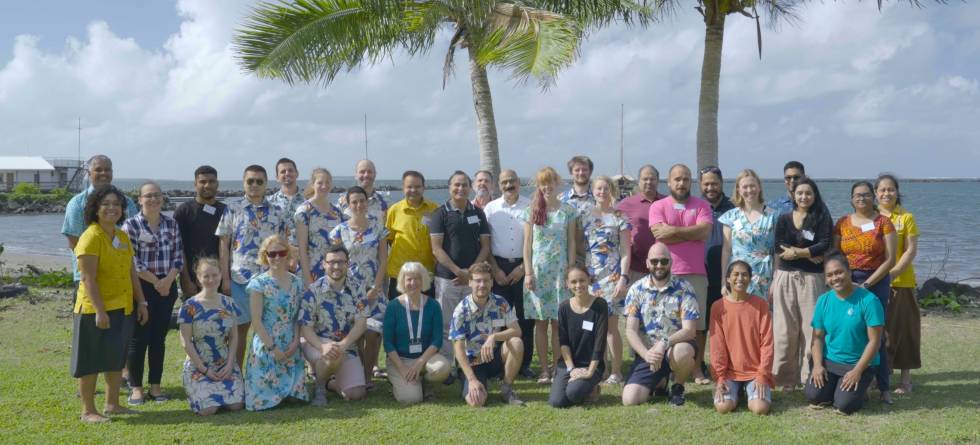Hello, can you hear me?
Can you see me?
Am I still muted?
I guess we have become all too familiar with these typical beginnings of videoconferences during the recent years.
These tools are great to connect us, also far across the globe, and they help us to maintain and enhance our ties with each other. Yet, there is something about in-person meetings that cannot be matched by their virtual counterparts, especially when one meets someone for the first time.
In science, as in real life, partnerships take time to build. How did you get to know your colleagues and friends? How did you gain trust and confidence in working with them? Is that something that would come natural with a digital handshake on screen or rather through a casual conversation over a coffee or a drink at a meeting?
As part of our journey to the South Pacific, we decided to reach out to our colleagues at the University of the South Pacific based in Suva on Fiji. The idea was to arrange a joint workshop on climate-related topics to get to know each other’s research foci and identify potential for future collaborations.

Getting organized
After some brief and polite emails, we decided for a Zoom meeting to further clarify our intentions. It was clear to both sides, that one can easily misunderstand intentions and expectations when interacting across cultures with mutual unfamiliarity.
Having a virtual meeting with Fiji meant getting up early, as the Fiji side kindly agreed to stay late in office until after 4pm, a meeting at 6am Norwegian time appeared to be a reasonable compromise. The first virtual meeting was very cordial and it was obvious from the get go that both parties wanted to turn this joint workshop into a reality.
Big thanks to the Fijian colleagues, who immediately agreed to take care of the local organization, while the Norwegian side agreed to take care of the program of the workshop. What a great sharing of tasks across the globe!
Nice to meet you
After two months of planning, we finally arrived in Fiji and were welcomed in person by our Fijian colleagues. We learned quickly, that it is local custom to not start meetings with an empty stomach; and we enjoyed a rich and diverse buffet for morning tea.
Strengthened by tasty local food, we embarked on our one-and-a-half-day workshop with presentations ranging from weather, precipitation, and ice sheets to various aspects of oceanography and marine ecosystems all the way to renewable energies and mitigation.
I guess it was the adrenalin and excitement to meet new colleagues and get to know about other cultures that made us forget our tremendous jetlag after more than 44 hours in transit the day before.
Of course, a virtual meeting would have meant no jetlag and strenuous travel, but would it have been the same? – Can you hear me? Can you see me? – No need for these clarifications, as we enjoyed each other’s company as well as in-depth discussions on science and cultural aspects. The foundation of a new collaborative network was laid.

